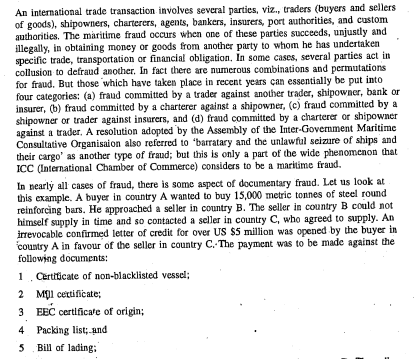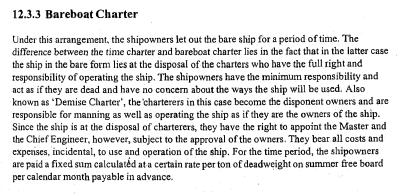Foreign Direct Investment
Foreign Direct Investment (FDI) is the investment of funds by an organisation from one country into another, with the intent of establishing ’lasting interest’. According to OECD (Organisation for Economic Co-operation and Development), lasting interest is determined when the organisation acquires a minimum of 10% of voting power in another organisation. For instance: the act of an Indian company such as Ola opening another headquarters in Sydney, Australia will be considered as bringing FDI into Australia.
Reinvestment of profits from overseas operations, as well as intra - organisational loans and borrowings to overseas subsidiaries are also categorised as FDI.
The meaning of FDI is not restricted only to international movement of capital. Its definition also encompasses the international movement of elements that are complementary to capital - such as skills, processes, management, technology etc.
There is a difference between FDI and FPI (Foreign Portfolio Investments), wherein the investor purchases equity of foreign companies. FPI means only equity infusion, and does not imply the establishment of a lasting interest.
FDI can be Greenfield, wherein an organisation creates a subsidiary concern in another country and builds its business operations there from the ground up. Greenfield investments provide the highest degree of control to the organisation. It can construct the production plant as per its specifications, employ and train human resources as per company standards, as well as design and monitor its operational processes.
Alternatively, FDI can be brownfield - wherein an organisation expands by way of cross-border mergers, acquisitions and joint ventures - by either leasing or purchasing existing facilities for its production. The clear advantage of brownfield investments is the savings in cost and time for starting up, as well as engaging in construction activities. Addition of equipment to an existing facility also qualifies as brownfield investment.
It is difficult to overstate the global and macroeconomic significance of FDI. As per UNCTAD (United Nations Conference on Trade and Development), global FDI amounted to around $ 1.8 tn in 2015.
There are many ways in which FDI benefits the recipient nation:
1. Increased Employment and Economic Growth
Creation of jobs is the most obvious advantage of FDI. It is also one of the most important reasons why a nation, especially a developing one, looks to attract FDI. Increased FDI boosts the manufacturing as well as the services sector. This in turn creates jobs, and helps reduce unemployment among the educated youth - as well as skilled and unskilled labour - in the country. Increased employment translates to increased incomes, and equips the population with enhanced buying power. This boosts the economy of the country.
2. Human Resource Development
This is one of the less obvious advantages of FDI. Hence, it is often understated. Human Capital refers to the knowledge and competence of the workforce. Skills gained and enhanced through training and experience boost the education and human capital quotient of the country. Once developed, human capital is mobile. It can train human resources in other companies, thereby creating a ripple effect.
3. Development of Backward Areas
This is one of the most crucial benefits of FDI for a developing country. FDI enables the transformation of backward areas in a country into industrial centres. This in turn provides a boost to the social economy of the area. The Hyundai unit at Sriperumbudur, Tamil Nadu in India exemplifies this process.
4. Provision of Finance & Technology
Recipient businesses get access to latest financing tools, technologies and operational practices from across the world. Over time, the introduction of newer, enhanced technologies and processes results in their diffusion into the local economy, resulting in enhanced efficiency and effectiveness of the industry.
5. Increase in Exports
Not all goods produced through FDI are meant for domestic consumption. Many of these products have global markets. The creation of 100% Export Oriented Units and Economic Zones have further assisted FDI investors in boosting their exports from other countries.
6. Exchange Rate Stability
The constant flow of FDI into a country translates into a continuous flow of foreign exchange. This helps the country’s Central Bank maintain a comfortable reserve of foreign exchange. This in turn ensures stable exchange rates.
7. Stimulation of Economic Development
This is another very important advantage of FDI. FDI is a source of external capital and higher revenues for a country. When factories are constructed, at least some local labour, materials and equipment are utilised. Once the construction is complete, the factory will employ some local employees and further use local materials and services. The people who are employed by such factories thus have more money to spend. This creates more jobs.
These factories will also create additional tax revenue for the Government, that can be infused into creating and improving physical and financial infrastructure.
8. Improved Capital Flow
Inflow of capital is particularly beneficial for countries with limited domestic resources, as well as for nations with restricted opportunities to raise funds in global capital markets.
9. Creation of a Competitive Market
By facilitating the entry of foreign organisations into the domestic marketplace, FDI helps create a competitive environment, as well as break domestic monopolies. A healthy competitive environment pushes firms to continuously enhance their processes and product offerings, thereby fostering innovation. Consumers also gain access to a wider range of competitively priced products.
For a multinational corporation, FDI in India is a means to access new consumption and production markets, and thereby expand its influence and business operations. It can gain access not only to limited resources such as fossil fuels and precious metals, but also skilled and unskilled labour, management expertise and technologies. FDI also enables an organisation to lower its cost of production- by accessing cheaper resources, or going directly to the source of raw materials rather than buying them from third parties. Often, there are various tax advantages that accrue to a company undertaking FDI. This can occur when the home country allows tax deduction on foreign income, or when the recipient country allows tax deductions and benefits for organisations incurring FDI in that country. Additionally, this can happen when the recipient country has a more beneficial tax code than the home country.
Short-term investments are assets that can be converted into cash or can be sold within a short period of time, typically within 1-3 years. Common instruments for short-term investing include short-term bonds, Treasury bills, and other money market funds. Short-term trading or day trading entails a significant degree of speculation and, consequently, substantial risk.











